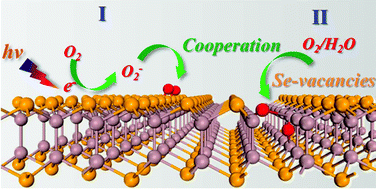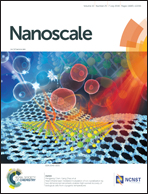Effect of illumination and Se vacancies on fast oxidation of ultrathin gallium selenide†
Abstract
Gallium selenide (GaSe) has recently emerged as a unique platform due to its exciting properties, namely, large and fast photo-response, high carrier mobility and non-linear optical properties. However, exposure for a few days causes the fast oxidation of ultrathin GaSe under ambient conditions and the oxidation mechanism remains unclear. By means of density functional theory calculations and ab initio molecular dynamics simulations, we comprehensively investigated the possible sources that cause oxidation of ultrathin GaSe. Our results show that illumination and Se vacancies induce the fast oxidation of GaSe. Under illumination, photo-excited electrons from the surface of GaSe are effectively transferred to oxygen molecules and thus, superoxide anions (O2−) are generated that react with GaSe. Moreover, Se vacancies directly react with O2. In both the cases, the Ga–Se bonds are continually replaced by Ga–O bonds, which eventually leads to complete degradation of GaSe, accompanied with the formation of the oxidation products Ga2O3 and elemental Se. The comprehensive degradation mechanism unveiled herein lays an important foundation for the development of suitable protecting strategies in GaSe-based devices.



 Please wait while we load your content...
Please wait while we load your content...